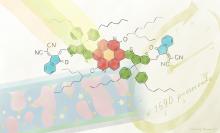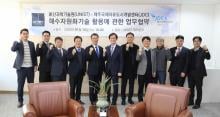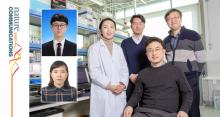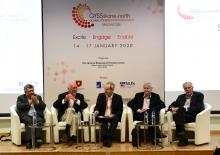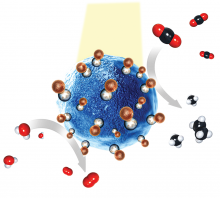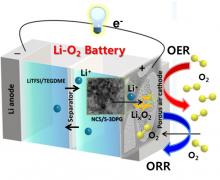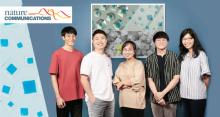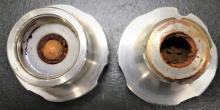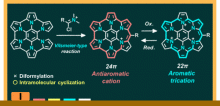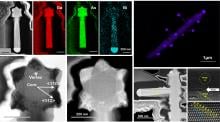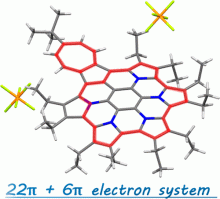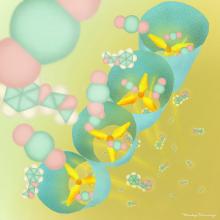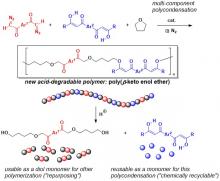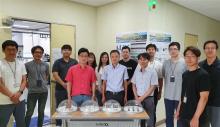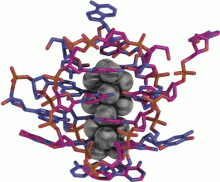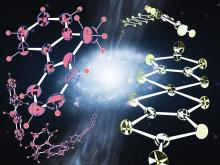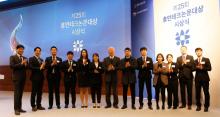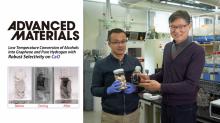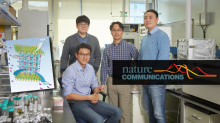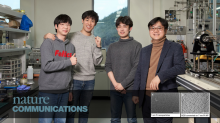Chemistry
News
05 Mar 2020
Molecular changes could improve the efficiency of next-generation photovoltaics.
26 Feb 2020
South Korea's Ulsan National Institute of Science and Technology (UNIST) has signed a Memorandum of Understanding (MoU) with the Jeju Free International City Development Center (JDC) for research collaboration.
20 Feb 2020
A recent study, affiliated with South Korea's Ulsan National Institute of Science and Technology (UNIST) has demonstrated bipolar all‐solid‐state Li–S batteries (ASSLSBs) that exhibit exceptional safety, flexibility, and aesthetics, for the first time.
20 Feb 2020
A recent study, affiliated with South Korea's Ulsan National Institute of Science and Technology (UNIST) has unveiled a novel biomass conversion technology that can turn forestry biomass residues (i.e., sawdust from timber logging) into higher value fuels and chemicals.
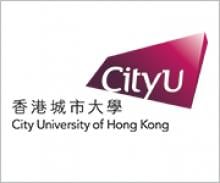
05 Feb 2020
Generating electricity from raindrops efficiently has gone one step further. A research team led by scientists from the City University of Hong Kong (CityU) has recently developed a droplet-based electricity generator (DEG), featured with a field-effect transistor (FET)-like structure that allows for high energy-conversion efficiency and instantaneous power density increased by thousands times compared to its counterparts without FET-like structure. This would help to advance scientific research of water energy generation and tackle the energy crisis.
04 Feb 2020
Pressing issues in science and technology, including in healthcare and climate change, took centre-stage at the recent Global Young Scientists Summit 2020 where eminent scientists and talented young researchers worldwide convened in Singapore.
15 Jan 2020
A new method could speed up drug discovery and lead to purer, side-effect-free medications.
10 Jan 2020
A material aims to deliver a one-two punch: recycling atmospheric carbon dioxide for the production of more sustainable hydrocarbon fuels.
09 Jan 2020
A low-cost catalyst on a sulphur-doped, porous, carbon nanostructure improves the performance of lithium batteries that run on air.
06 Jan 2020
Researchers at Kanazawa University report in Analytical Chemistry an efficient method for filling a batch of nanopipettes with a pore opening below 10 nanometer. The method is based on the application of a temperature gradient to the nanopipette tips so that residual air bubbles are driven out.
01 Jan 2020
A biodegradable biopolymer containing turmeric oil could help extend food shelf life.
31 Dec 2019
A research team, affiliated with South Korea's Ulsan National Institute of Science and Technology (UNIST) has unveiled a novel algorithm that identifies optimal pairs for composing metal-organic frameworks (MOFs).
19 Dec 2019
Researchers have shown mechanical force can start chemical reactions, making them cheaper, more broadly applicable, and more environmentally friendly than conventional methods.
09 Dec 2019
Researchers at Tohoku University have discovered a way to detect carbon impurity in nitride semiconductors using light.
23 Oct 2019
Two new Pd-based initiating systems for C1 polymerization of diazoacetates were reported: Pd(nq)2/borate (nq = naphthoquinone, borate = NaBPh4) and [Pd(cod)(Cl-nq)Cl/borate] [cod = 1,5-cyclooctadiene, Cl-nq = 2,3-dichloro-1,4-naphthoquinone]. The former exhibited high activity, affording poly(alkoxycarbonylmethylene)s with high molecular weights in high yields. The latter was effective for controlling the stereostructure of the resulting polymers.
18 Oct 2019
Nitrogen-embedded polycyclic compounds with strong antiaromaticity and stability were synthesized and isolated for the first time using pyrrole as a key unit. An expedited approach toward stable antiaromatic polycyclic compounds enables not only the revealing of its fundamental properties, but also its application to organic electronic materials.
18 Oct 2019
A research team of Ehime University paved a way to achieve unexplored III-V semiconductor nanostructures. They grew branched GaAs nanowires with a nontoxic Bi element employing characteristic structural modifications correlated with metallic droplets, as well as crystalline defects and orientations. The finding provides a rational design concept for the creation of semiconductor nanostructures with the concentration of constituents beyond the fundamental limit, making it potentially applicable to novel efficient near-infrared devices and quantum electronics.
17 Oct 2019
Polycyclic heteroaromatic molecules are a highly useful class of organic materials. In this study, synthesis of a new azacoronene, in which both pyrrole and azulene moieties are circularly fused, was achieved in just three steps. This new azacoronene exhibited multistep reversible oxidations under electrochemical and chemical conditions. Formation of an aromatic 22π-electron conjugation and a tropylium cation (6π-electron conjugation) in the dicationic state played a key role in stabilizing this cationic species.
11 Oct 2019
The captured CO2 can be converted into useful organic materials.
25 Sep 2019
A new type of degradable synthetic polymer was prepared by Rh-catalyzed three-component polymerization of a bis(diazocarbonyl) compound, bis(1,3-diketone), and tetrahydrofuran. The resulting polymer, poly(β-keto enol ether), was highly sensitive to mild acidic conditions and degraded into a combination of well-defined low molecular weight compounds. With this unique degradability, the polymer could be utilized as an environmentally friendly polymeric material.
19 Sep 2019
DGIST Division of Energy Technology achieves the highest photoelectric conversion efficiency in the world. Huge expectations toward the commercialization of flexible solar cell that is applicable in various fields.
11 Sep 2019
Determination of the crystal structure of a DNA-stabilized silver nanocluster
31 Aug 2019
South Korea's Ulsan National Institute of Science and Technology (UNIST) ranks 20th out of 351 participating universities from 60 countries, according to the 2019 THE Young University Rankings. Besides, in terms of citations, UNIST ranked 1st in South Korea and 7th in the world.
29 Aug 2019
South Korea's Ulsan National Institute of Science and Technology (UNIST) has been ranked 68th globally and 1st in South Korea in the 2019 CWTS Leiden Ranking.
29 Aug 2019
A highly conducting state has been found in a molecular crystal under UV-irradiation. The state reversibly appears in accordance with UV-irradiation, but does not appear by any other method such as raising the temperature, which often induces metallic behavior in insulating molecular crystals. The UV-excited state exhibits conduction and magnetic behavior characteristic of metallic substances. The result suggests that there is an optically accessible, but thermally inaccessible, state of matter.
27 Aug 2019
South Korea's Ulsan National Institute of Science and Technology (UNIST) has received 1 Gold, 6 Silver, and 2 Special awards at the 25th Samsung Humantech Paper Awards ceremony.
27 Aug 2019
A recent study, affiliated with South Korea's Ulsan National Institute of Science and Technology (UNIST) has unveiled a new way to turn discarded eggshells into hydrogen, an innovative and alternative energy for the future.
27 Aug 2019
A recent study, affiliated with South Korea's Ulsan National Institute of Science and Technology (UNIST) has presented noble catalysts for water electrolysis, capable of generating hydrogen and oxygen at the same time.
26 Aug 2019
A recent study, affiliated with South Korea's Ulsan National Institute of Science and Technology (UNIST) has introduced a novel technology, capable of fabricating highly ordered arrays of graphene quantum dot (GQD). This research has gained much attention from academia since it was introduced in the February 2019 issue of Nature Nanotechnology.
Events
Sorry, nothing coming up for this discipline
Researchers
Sorry, nothing coming up for this discipline
Giants in history
Sorry, nothing coming up for this discipline



